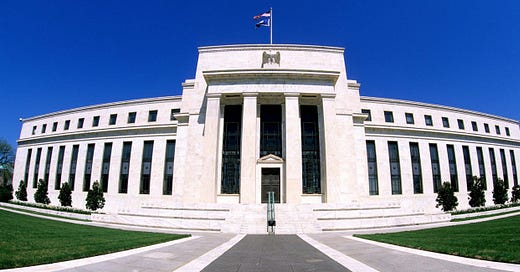In the US, the equity market’s month-end close yesterday was significant being the first losing quarter since March 2020. The S&P 500’s overall loss for the quarter was around 5%.
But more importantly, it is the activities in the bond markets that could drive the future of the equity markets. The Fed’s newfound emphasis on fighting inflation with the possibility of raising rates by 50 basis points on May 15th has fueled the two-year treasury yield to move the most since 1984. This has created an inversion in the most-watched spread between the 10 year and 2-year treasury yields.
Why is this very important? In each of the past six recessions dating back to 1955, the recessions were preceded by a yield inversion. Recession followed between 6 and 24 months. This is actually not much information to make investment decisions. For that matter, yield inversion has taken place many times in between without causing a recession.
The last major inflation figures were reported at around 8%. The next major release is on Apr 12 and it is expected to be in the double digits. The consensus view for March inflation is around 8.2%. But I don’t think many are taking into account the 30% rise in oil prices. So the drumbeat about inflation going higher will be very evident in the markets. But keep in mind that these numbers are backward-looking.
Will the Fed really go after fighting inflation? My hunch is that they won’t. The last time the Fed was faced something like this was in the late ’70s. At that time, Fed Chairman Paul Volcker took it on himself to fight inflation and he had a much freer hand then. He raised rates to 20% going above the inflation rate in 1981 and driving the US into a recession. But he did control inflation. That’s not going to happen now. The Fed is more likely to give lip service to raising rates and will not follow up in lockstep with the rise in inflation.
There are many reasons for it. First is the mammoth fiscal deficit that they have created. Second is the fastest rise in mortgage rates that we have ever seen. The Fed’s threat to raise interest rates for the rest of the year is already being reflected in the mortgage markets. If they really follow up with what is being communicated, that will destroy the housing market. That surely will not be good for Main Street.
The average 30-year fixed interest rates have risen from around 2.75% back in December 2020 to the latest spike to 4.42%. That’s a massive rise in 15 months and the last three months have been the most dramatic.
The lenders are actually telling the Fed, “If you raise the rates any further, we’re going way above 5% and that’s not something you want to deal with”. Housing prices are already at record highs due to the past policies of bringing interest rates down. Now monthly mortgage payments are increasing and that means less discretionary spending. Those who are on variable-rate mortgages are starting to feel the pain.
What could the Fed do differently? The Fed only manages the short end of the curve but there is another major central bank that is very active in the bond markets. The Bank of Japan.
Bank of Japan intervened twice this week on the same day to buy the JGBs in ‘unlimited amounts’ to put a cap on rising yields. The yield curve control policy is a game that BOJ has adopted to promote economic activity for a long time. The 10-year yield in Japan is at six-year highs and they don’t like it.
This rise in ten-year yields is not something other central banks like too. The 10-year yield in Germany went from -10 basis points to +74 points just this month. So don’t be surprised if the Fed will also move to some sort of ‘yield curve control’.
If you received value from this post, and you’d like to send some back, or if you’d like to signal to me to continue spending time on these types of explorations, feel free to buy me coffees (thank you!):
So, there we go. Thanks for reading Breezy Briefings. If you enjoyed this, I'd really appreciate it if you could take a second and tell a friend. Honestly. It makes such a big difference.
Forward this email. Recommend the newsletter. Share on Twitter, WhatsApp, Telegram, LinkedIn, Slack, wherever!
Join Breezy Briefings’ Official Telegram Channel: https://t.me/BreezyBriefings
Abraham George is a seasoned investment manager with more than 40 years of experience in trading & investment and multi-billion dollar portfolio management spanning diverse environments like banks (HSBC, ADCB), sovereign wealth fund (ADIA), a royal family office and a hedge fund. Currently, he is a co-founder of a new hedge fund where foreign citizens can invest in Indian growth stocks like Tanla operating in hyper-growth markets like CPaaS.



